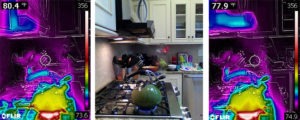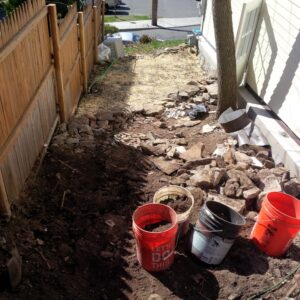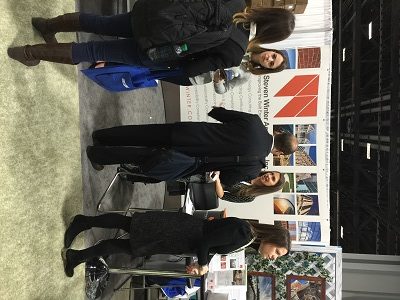- September 23, 2016
- 0 Comments
- In Miscellaneous
- By
Next time you are cooking, take a look at your kitchen hood. You are likely cooking on the front two burners, but your kitchen hood is not likely to extend fully over these burners. For typical exhaust fans, they do a good job of exhausting steam, contaminants, etc. from directly below them, but don’t necessarily pull all fumes that are outside the perimeter of the fan enclosure. According to Lawrence Berkeley National Laboratory (LBNL) the capture efficiency of standard hoods is typically in the range of 30-40% on front burners and can be as high as 90% on back burners. To demonstrate this, I boiled some water in a tea pot on my stove. Once steam was coming out, I pulled out an infrared camera and started to take images. Wait…you don’t have an IR camera just sitting around your home? You are missing out on hours and hours of fun with the kids. They are great for science projects.
Back to my point. I have an LG over-the-range microwave with extenda™ vent. This allows the vent area to extend out an additional ~6”. When the microwave hood (exhausted to outside) was operating on turbo mode (just over 300 cfm exhaust) and without the vent extension slid out, the majority of steam from the tea pot on the front burner was passing by the vent and going up the front of the microwave (as evidenced by moisture build up on the microwave door). And yes, I realize that I turned the spout of the tea pot outwards to more dramatically show the point I am trying to make. When the slide out vent was pulled out, the amount of steam capture increased dramatically, but there was still some moisture build up on the front edge of the vent slide out. Obviously, this is not a scientific study; it is just anecdotal evidence to further the discussion on the need to consider capture efficiency in the design of kitchen range hoods.







